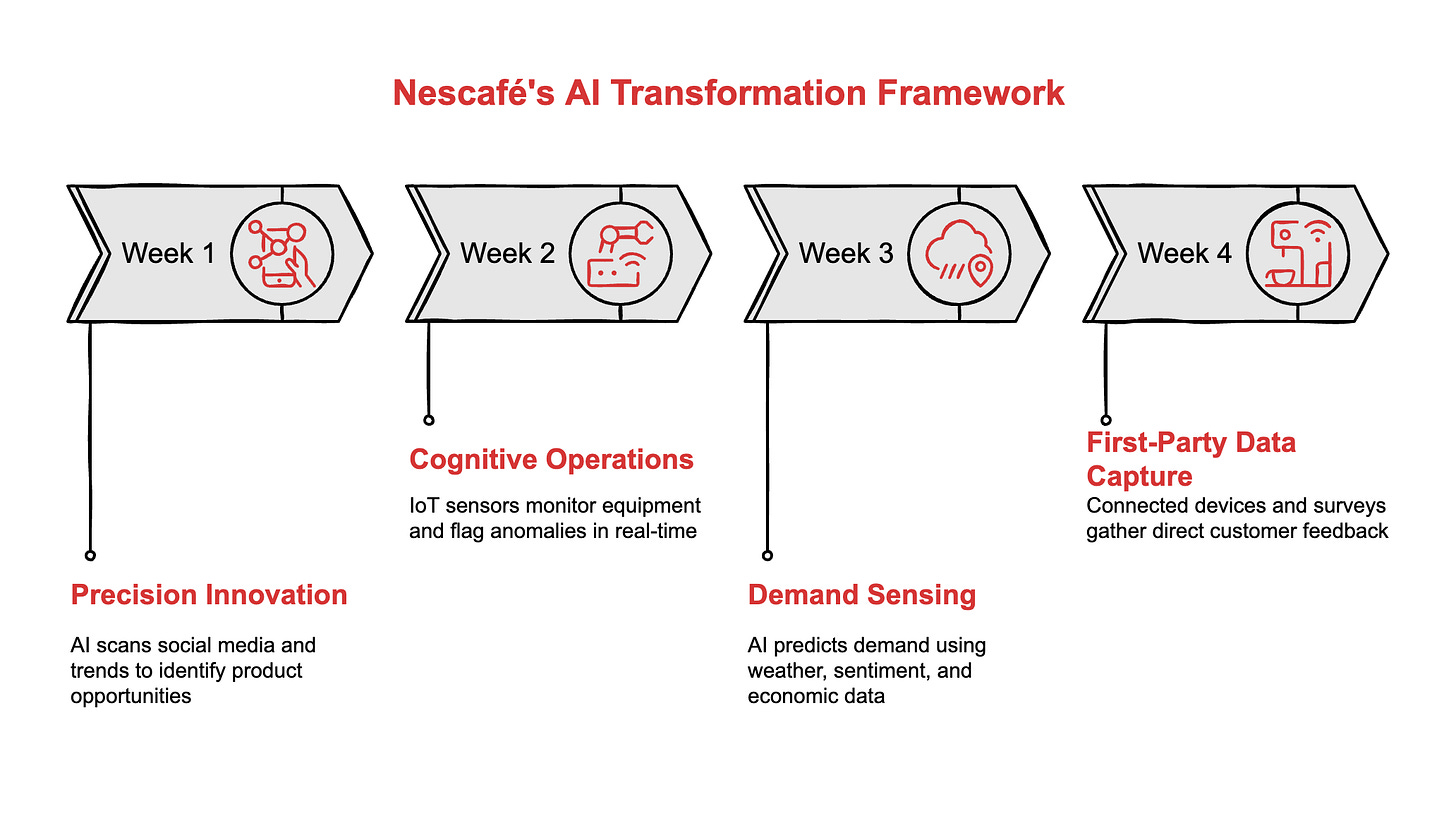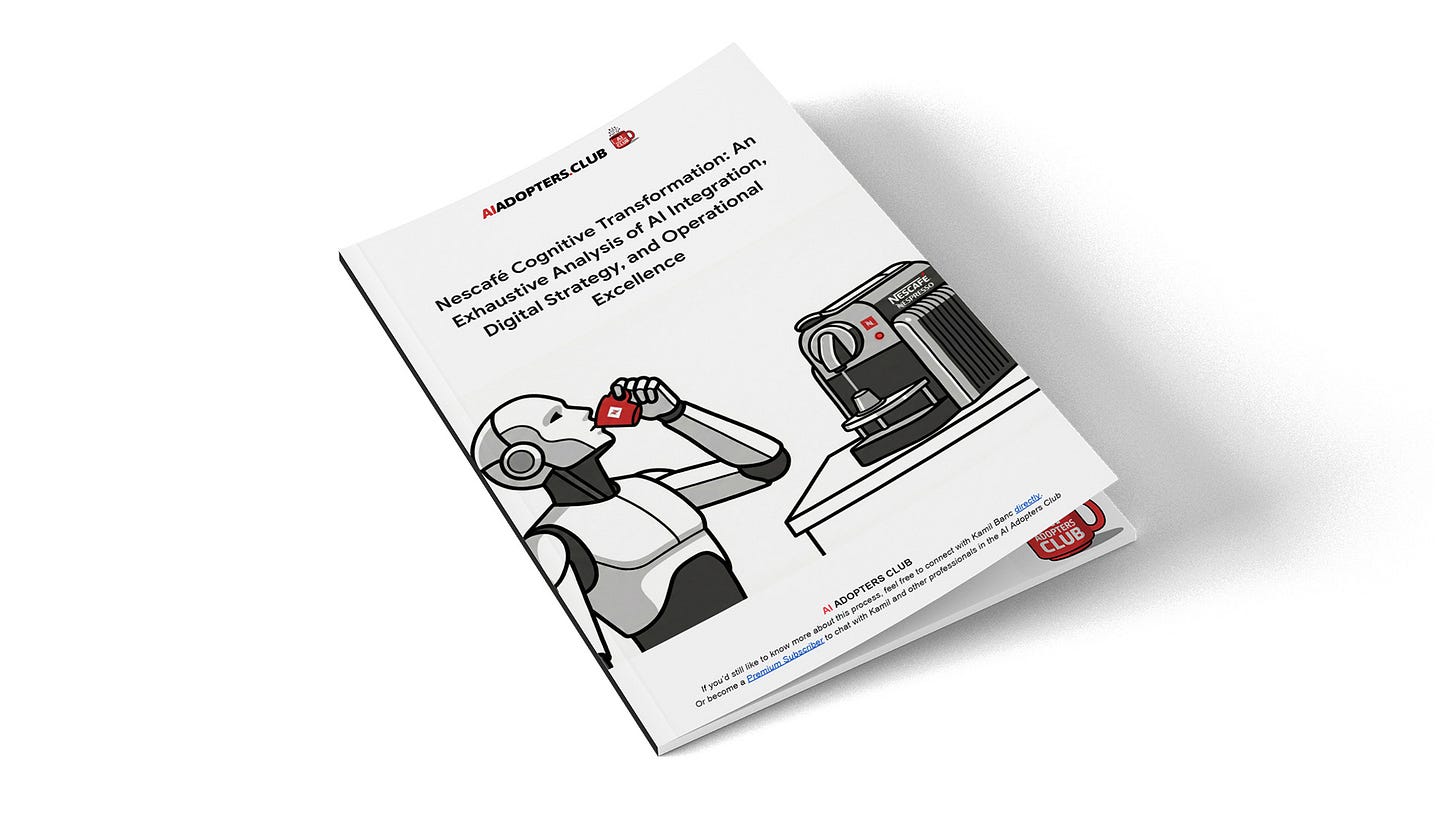How Nescafé cut product development from 3 months to 3 weeks
A 150-year-old coffee giant now moves faster than most startups. Here’s the playbook SMBs can actually steal.
Hey Adopter,
Nescafé runs the world’s largest soluble coffee factory. One hour of downtime costs $52,000. Innovation cycles used to drag on for 12 to 18 months. The old way was bleeding money.
Then they rewired everything. AI now predicts machine failures weeks ahead, generates thousands of product concepts in minutes, and cuts forecasting errors by 30%. The result? $2 million saved at a single factory. Inventory slashed by 20%. Product ideation compressed from three months to three weeks.
This isn’t a story about enterprise budgets you can’t match. It’s a blueprint for the same logic at smaller scale.
The number that changes the SMB math
Nescafé’s Sales Recommendation Engine lifted revenue by 3% across every market where it launched. The tool runs on a single data lake stitching together 15 sources. Not magic. Just clean data and one focused use case.
The premium section below breaks down exactly how they sequenced the rollout, which vendors powered it, and where smaller operators can shortcut the timeline.
Download the full 28-page case study for the stack, timelines, and measured impact.
Predictive maintenance avoided 5 major unplanned stoppages between 2020 and 2025
The data lake generated $200 million in business value
Cloud migration reduced critical platform incidents by 80%
Generative AI cut ideation from 3 months to 3 weeks
What SMBs can do this week
Start with one prediction problem, not ten. Nescafé’s Toluca factory focused predictive maintenance on transformers, switchgear, and motors. Pick your highest-cost failure point, install basic IoT sensors, and stream data to a cloud dashboard before touching any AI model.
Minimum data you need in place
The Sales Recommendation Engine required 15 integrated data sources before it worked. At a minimum, you need sales history, customer demographics, and inventory levels flowing into one repository. No data lake, no AI lift.





